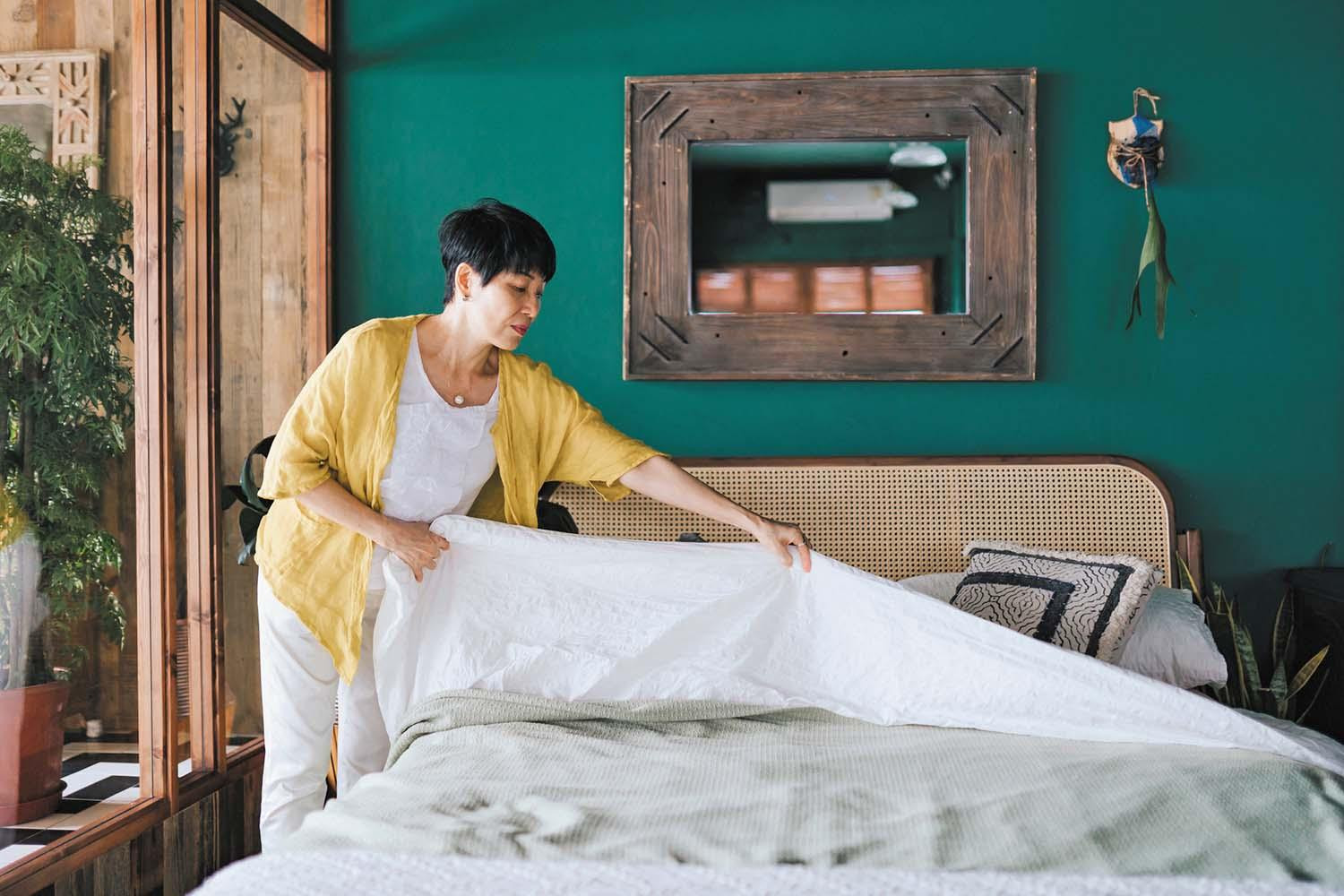The incontinence tool kit
Medications, adaptive clothing, protection pads, and certain gadgets can help you avoid or better cope with urine leaks.
- Reviewed by Anthony L. Komaroff, MD, Editor in Chief, Harvard Health Letter; Editorial Advisory Board Member, Harvard Health Publishing

Incontinence often develops gradually, making it easy to dismiss occasional urine leaks… at least until they become a frequent problem. At that point, it’s time to see your doctor to figure out why it’s happening and what to do about it. That may include using several types of tools to navigate the discomfort and inconvenience of the condition. Here are some mainstays for your tool kit.
Medications
Medications may help reduce the frequency of urine leaks. They’re typically prescribed for urge incontinence (the kind that makes you rush to the bathroom), which may be caused by involuntary bladder contractions. “Increasingly, we try to limit long-term medicine use and rely on behavioral approaches first,” says Dr. Heidi Rayala, a urologic surgeon at Harvard-affiliated Beth Israel Deaconess Medical Center.
For people who do need medication, options fall into two main drug classes. Anticholinergics, such as oxybutynin, block a chemical needed for bladder contractions. Side effects can include confusion, dry eyes, dry mouth and cavities, and constipation. Beta-3 agonists, such as mirabegron (Myrbetriq), have fewer side effects than anticholinergics. These drugs relax muscles so the bladder can fill more completely. “Beta-3 agonists are usually better tolerated, but they may not be as effective,” says Dr. Rayala.
Other types of incontinence might also warrant a prescription medication. One example is overflow incontinence, caused by a bladder that can’t completely empty due to something blocking urine flow (such as an enlarged prostate in men).
Medications aren’t prescribed for stress incontinence (which makes you leak when you laugh or cough). “That’s caused by a weakened sphincter muscle, which holds in urine. It doesn’t usually improve with medication,” Dr. Rayala says.
Standard supplies
Adult briefs (diapers) are probably the best known type of incontinence tool. The briefs are more streamlined, absorbent, and comfortable than they once were, and they often feature natural fiber linings such as cotton or bamboo.
Many other types of products also can help keep you dry, such as the following:
Protection pads. If you’re uncomfortable wearing an adult brief, consider slipping an absorbent pad into your underwear. Pads come in different shapes to accommodate male or female anatomy.
Leakproof underwear. This garment looks and feels like regular underwear, but is made of high-tech, washable fabric that absorbs moisture and prevents wetness from leaking onto your clothes.
Bed pads. Disposable or washable cloth bed pads are helpful if you have nighttime leaks. They’re about three feet square in size. For cloth bed pads, look for high-tech fabrics that are absorbent and wick away moisture. Likewise, you might want to invest in a waterproof cover to protect your mattress.
Adaptive clothing. Going to the bathroom in a hurry requires pants that are easy to unzip or unbutton and lower quickly. Look for simple, uncomplicated fasteners (such as Velcro) or elastic waistbands.
Quick-dry clothing. Clothes that dry quickly are popular for exercise and sporting activities. They also can help you stay comfortable in case of urine leaks.
Barrier cream. When leaks occur, your skin can be at risk for irritation. Barrier cream with zinc oxide (applied on the inner thighs) can help.
Portable urinals. These small, plastic receptables are handy to keep at your bedside or in a car. They are inexpensive (about $10 on Amazon), and there are versions for both men and women.
Gadgets and tech
In addition to standard incontinence tools and supplies, some gadgets and smartphone apps might assist in your effort to stay dry and comfortable.
Bed-wetting alarms. If you experience leaks while you sleep in a bed or doze in a chair, you might want an alarm that detects when a leak happens, alerting you to clean up quickly. This can help you avoid prolonged exposure to wetness (which can lead to skin breakdown). Many of today’s alarms link to smartphone and smart watch apps to alert you.
Bathroom locator apps. These free apps can help you find public bathrooms quickly. Some apps, such as Toilet Finder, map the locations of hundreds of thousands of facilities in North America.
Bathroom break apps. One app (called RunPee) tells you the best times to run to the bathroom during a particular movie, so you don’t miss the best scenes. This can help you plan your bathroom breaks.
Note: You might see other products online promising to help you deal with incontinence, such as bladder fullness monitors. But before you invest in any device, check with your doctor. There’s a chance the item isn’t effective or recommended.
Beyond pills and gadgets
Some of the most important tools to deal with incontinence aren’t pills or gadgets, but strategies. These include controlling underlying conditions that can lead to incontinence (such as diabetes), losing weight, making lifestyle or behavioral changes (see “Best habits to help you cope with incontinence”), and pelvic floor training.
Pelvic floor training involves working with a trained pelvic floor physical therapist to learn to effectively tighten and release the muscles near your bladder. This will help you retain urine until you can reach the bathroom. The therapy takes time and practice.
Certain surgeries and treatments, such as bladder Botox injections, also can help you deal with incontinence effectively.
So work with your doctor to find what helps, and give yourself time. “There’s a lot to learn about urinary incontinence,” says Dr. Samantha DeAndrade, a urogynecologist and reconstructive pelvic surgeon at Beth Israel Deaconess Medical Center. “Part of the reason many people are not aware of this diagnosis or the many treatment options is that we simply don’t talk about it enough, even though it’s very common. The learning curve is significant.”
Best habits to help you cope with incontinenceLifestyle changes are among the best ways to keep incontinence under control. “It’s important to establish healthy bladder practices, especially before considering treatment options,” says Dr. Samantha DeAndrade, a urogynecologist and reconstructive pelvic surgeon at Harvard-affiliated Beth Israel Deaconess Medical Center. She recommends the following habits.
|
Image: © AsiaVision/Getty Images
About the Author

Heidi Godman, Executive Editor, Harvard Health Letter
About the Reviewer

Anthony L. Komaroff, MD, Editor in Chief, Harvard Health Letter; Editorial Advisory Board Member, Harvard Health Publishing
Disclaimer:
As a service to our readers, Harvard Health Publishing provides access to our library of archived content. Please note the date of last review or update on all articles.
No content on this site, regardless of date, should ever be used as a substitute for direct medical advice from your doctor or other qualified clinician.















